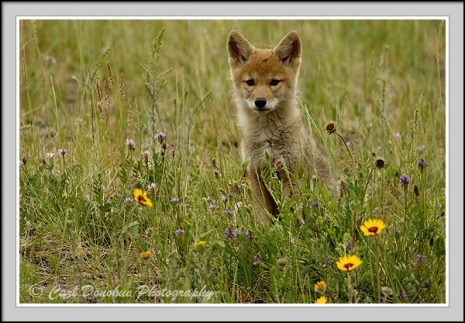THE DATA ON THIS PAGE IS INVENTED FOR COURSE PURPOSES- NO STUDY OCCURRED !
Overview
Coyotes play a pivotal
role in central Alberta ecosystems, but they also pose a challenge for
wildlife managers. It is not clear if coyote ecology varies along urban
– non-urban gradients, however, there is increasing concern regarding
human conflicts with coyotes, especially in an urban setting.
Understanding when and where coyotes are most active will allow for
more effective management plans that strive to minimize coyote
encounters.
The objective of this study is to assess the
circadian (daily) activity levels of coyotes in relation to human
activity levels and to determine if diurnal activity levels differ
across site types. The research took place in the City of Edmonton and
Strathcona County, with 15 study sites in urban, rural and natural
areas. Remote trail cameras were installed at each site and were left
running 24 hours a day, for 15 days. Images of humans and coyotes were
then used to calculate a relative activity index.
Coyotes were
found to be active throughout the day in natural areas where human
activity levels are consistently low. In rural and urban areas, a high
level of human activity was correlated with lower levels of coyote
activity. Coyotes in urban areas were not more active during the day
than rural coyotes, which was unexpected. Rural coyotes, however, were
significantly more active during the nocturnal period than urban
coyotes were. Coyotes in rural areas are subject to direct human
exploitation, which likely explains the decrease in diurnal activity
levels when humans are most active and spikes in nocturnal behaviour
similar to coyotes in natural environments. Urban coyotes may be less
active during the day, as aggressive or nuisance coyotes that are more
present during diurnal periods are removed from the population through
wildlife control measures. Another explanation is that urban coyotes
have become habituated to human activity and their activity levels are
more constant throughout a 24 hour period. More research is required to
determine if population densities or seasonal variation can affect the
activity patterns of coyotes.


